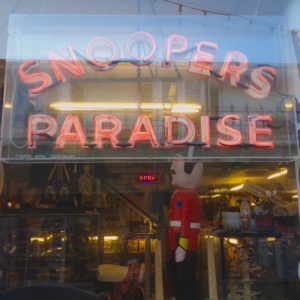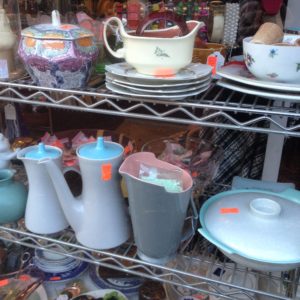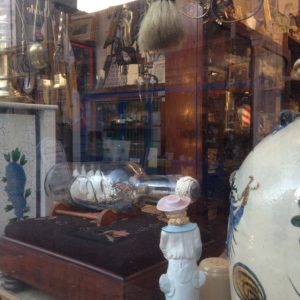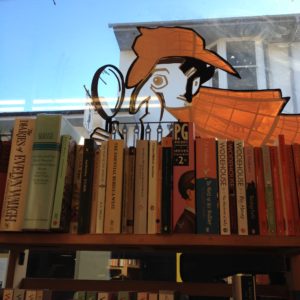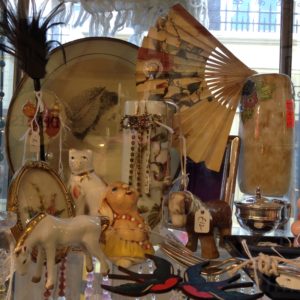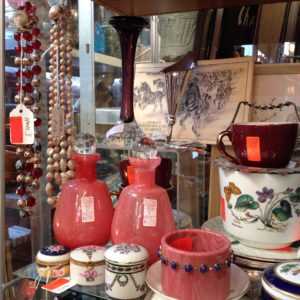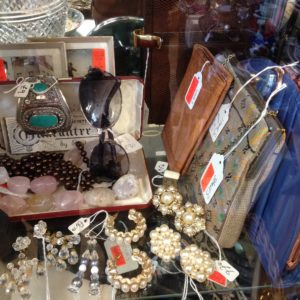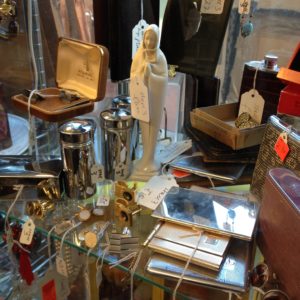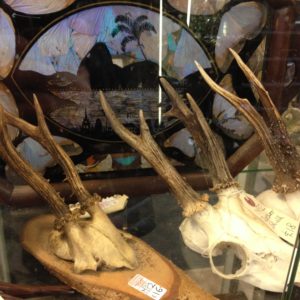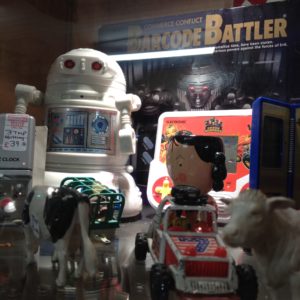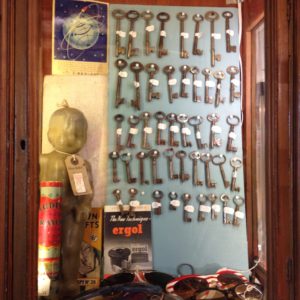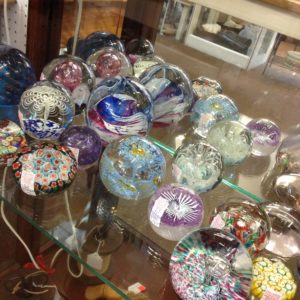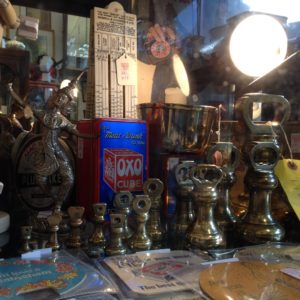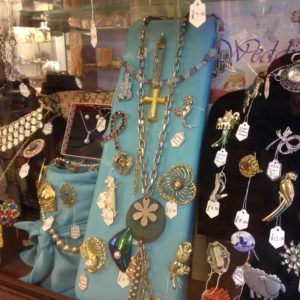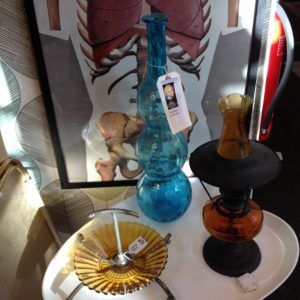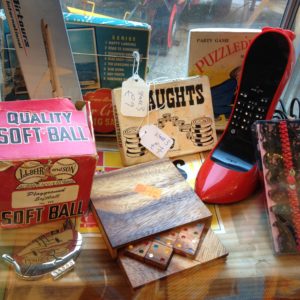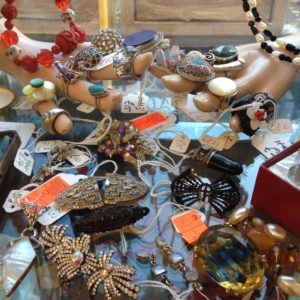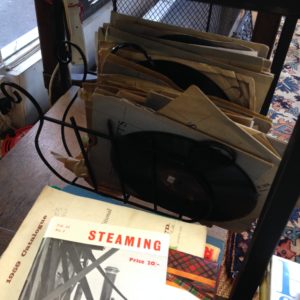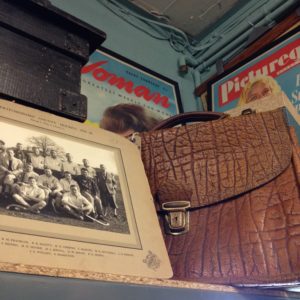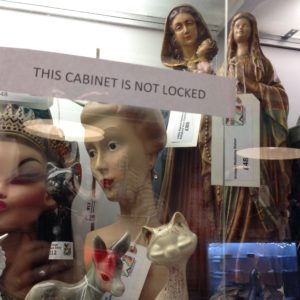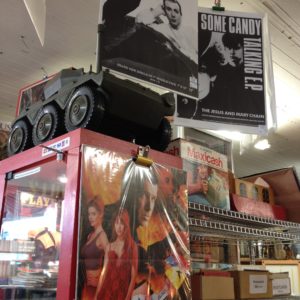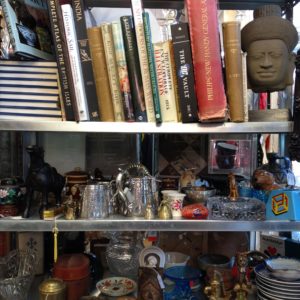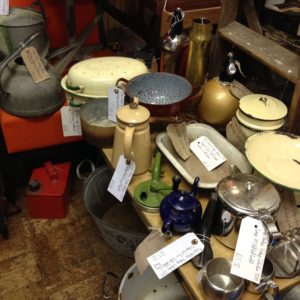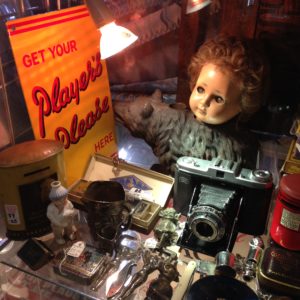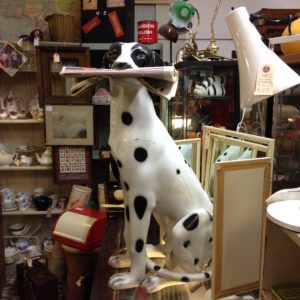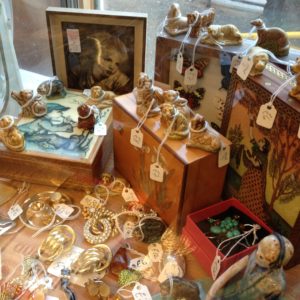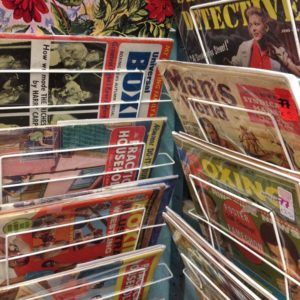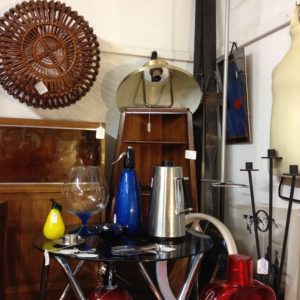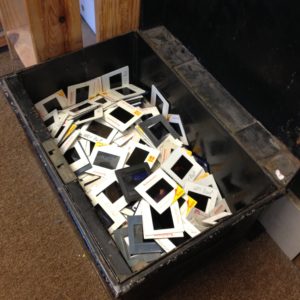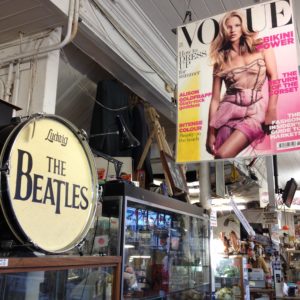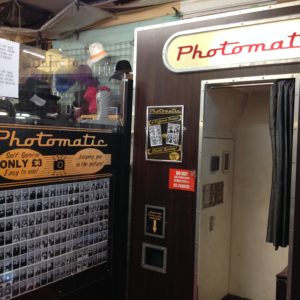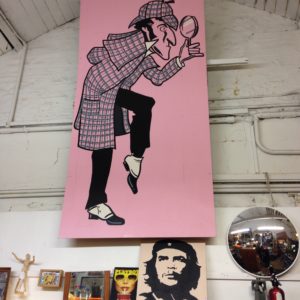Outside looking in, the glazed facade of Brighton’s premier flea market, Snoopers Paradise (“Snoopers”), projects domestic objects right into the street. Close-up window-shopping is only possible out of hours when external stalls have been packed away, but it draws people in the next day saying, “I saw this in the window last night”. As the market is made up of individual stalls these aren’t shop windows in the conventional sense of displaying a coherent offer of what’s in-store. Instead, they provide random hints at the aesthetic diversity on sale, for Snoopers accommodates all tastes.
The most established stallholders (the longest serving) deal in Victoriana or “proper antiques”, while the youngsters (under 60) focus on vintage / retro (whatever the definition) and are Midcentury-centric, because nostalgia is relative and fashions change. Stalwarts aside, what goes around comes around. Snoopers is a barometer of taste whether responding to profound shifts in the antique trade, where prices rise and fall due to global demand, or reflecting micro-trends fanned by TV, film and media; from Wallpaper* magazine’s rehabilitation of the 1970s, to a fixation with china tea sets prompted by the baking craze, and a resurgence in silver-plate pomp thanks to Downton Abbey. A one-stop-shop for another micro trend, the urban hipster visits Snoopers to pick up wooden packing cases and crates (the building blocks of all furniture), cut-throat razors (to shape beards), rare vinyl (feeding that DJing hobby), enamel kitchenware (campfire gourmet) and all things tweed (fashion staple).
The urban extends inside too as the flea market is porous. With people coming and going from two entrances, the main thoroughfares are extensions of the street, and lined with mini “shop windows” in the form of glazed cabinets, open shelves and merchandised displays. Daylight, fairy-, spot- and strip-lights, LEDs and Anglepoise (for display and for sale); multiple light sources illuminate the darkest corners and reflect and refract on shiny surfaces – chrome and silver, glass and plastic, to create a retail spectacle that is more than the sum of its parts.
IKEA’s Detolf knick-knack cabinet is the unit of measurement for space for rent. (No longer sold by IKEA in the UK, there is a healthy re-sale market online and among stallholders.) Stallholders can hire one cabinet, or if they rent a larger space, might fill it with Detolfs (Detolves?). Glazed on all sides it provides maximum visibility but can be secured with the addition of a lock from the local hardware shop. If a stallholder opts to sell lucrative but fragile objects – jewellery, watches, powder compacts, silver cutlery, cameras, coins, collectible figurines – or stuff that’s easy to pocket – discs of all sorts (games, music, movies), sunglasses, hip flasks, plastic toys – the Detolf is the perfect solution. Grouping similar items together means that when a cabinet is opened (by a member of staff) the customer can browse multiple items. Stallholders use cabinets and objects to construct narratives, which might appeal to particular customers. For example, someone looking for a vintage cigarette case may be tempted by a retro lighter and gentlemanly cufflinks; or an overtly feminine display might entice a jewellery shopper to add a figurine or cute toy to their dressing table. Colour blocking is also used to tie together disparate objects and create a coherent, appealing aesthetic. Vintage shop fittings are used to create an appropriately polished displays; by contrast, random items might be grouped together with no concession to aesthetics. At Snoopers there are as many approaches as there are stallholders with varying motivations.
Stallholders have a good idea of what collectors (in particular) are looking for as there are many well-grazed collecting genres: from animal art and taxidermy to old tools and locks; from glass paperweights to Star Wars figures and toy robots; and more general fixations with “all things” owls, pigs, cats or dogs. A “readymade” collection might appear, because a stallholder purchased it complete and would hope to sell it to similarly keen collector. Display methods often echo the aesthetic of a collection; glass objects on glass shelves, keys in a locked cabinet. Taking a wider view of the objects on display, they represent a comprehensive range of materials and manufacturing techniques from across the 19th, 20th and 21st centuries, whether originating in the natural world, dreamed up by designers and marketing teams from Hollywood to Tokyo, or lovingly crafted by hand, amateur and skilled.
Scale and display are important concerns at Snoopers as space is at a premium; stallholders pay a weekly rent depending on the size and position of each stall. Making a stall profitable is a precarious balancing act between offering plenty of stock and maximising visibility and accessibility, and all sorts of shelves and surfaces are pressed into service, even those for sale. Space above stalls is also exploited as suspending objects significantly extends capacity. Stalls that sell expensive, large items such as furniture, mix it up with some affordable and fast-moving “smalls” (as they’re called in the trade). A stallholder’s “stall” might actually be multiple sites around the market, with items grouped by size, genre or aesthetic. This can mitigate against inconsistencies in foot-fall as some areas are well trodden and other corners are virtual cul-de-sacs. Customers often sweep through to see everything and pick up items only as they return to the central till. Stallholders in the furthest corners can benefit from retail’s “reverse” psychology; the “dead zone” is adjacent to the door but when the “end” is in sight a customer will begin to make purchasing decisions. Often a “showstopper” object creates real interest; drawing a crowd, it might sell in a day. By contrast, collections of magazines and records that are regularly topped up entice aficionados back, again and again.
Items in bulk; obsolete technology; archaic but still working; the patina of a lifetime’s use; surreal juxtapositions (whether consciously composed or happy accident); remnants of family history; “dead people’s stuff”; “cool shit”; “we had one of those”; by various means this market generates mixed feelings, from the treasure hunt to macabre voyeurism. A site for shopping as leisure, Snoopers is a tourist attraction, a sight to see, and a retreat from the rain. But it’s also a destination for antiques traders, dedicated collectors, and re-sellers looking for bargains to list on eBay and Etsy. Between those poles – the random shopper who “likes” something and the financially motivated picker – are the art, design and fashion professionals who look for objects as inspiration, and the art directors and production designers of theatre, television and film, searching for props and costumes.
The trend for vintage shopping has propelled Snoopers into the limelight. It features in magazines, blogs and “Best of” lists, including Vogue’s “Vintage Shopping Guide” (April 2015, pp.161-164), and is on the BBC’s radar, with presenters of those antique-hunting programmes regularly popping in. Do a Google Image Search of “Snoopers Paradise” and you’ll find it on stock photo sites, Twitter and Instagram, even though photography is prohibited (I received a special dispensation from the management). Every day someone new discovers it “in the flesh”, whether they’ve travelled half way around the world or live locally, and invariably say “I’ll be back”. The installation (by a stallholder) of an coin-operated photo booth has heightened the level of excitement in the market, as noisy groups appropriate dress-up hats and props and squeeze and squeal their way through four flashes of fame. Whether you’re a dedicated crap-hound or simply a leisure shopper out “antiquing”, Snoopers Paradise is both resource and entertainment, but unlike most museums, to which it is constantly compared, you can touch the objects and you may even bring them home.
All photographs taken by Liz Farrelly, on an Apple iPhone 4S.

